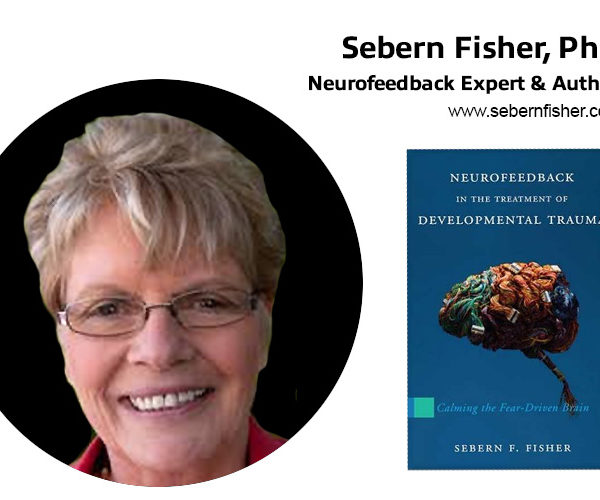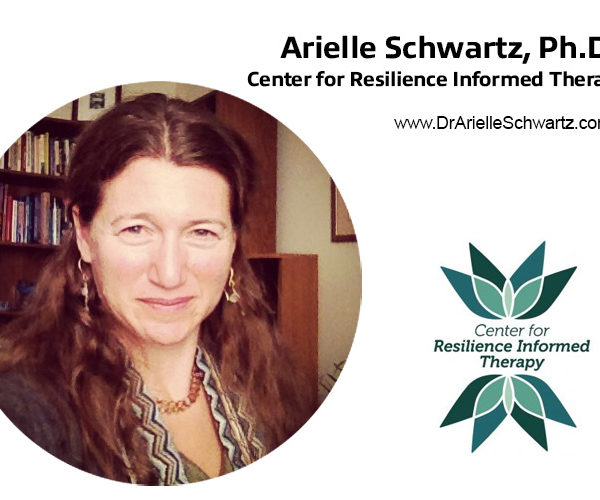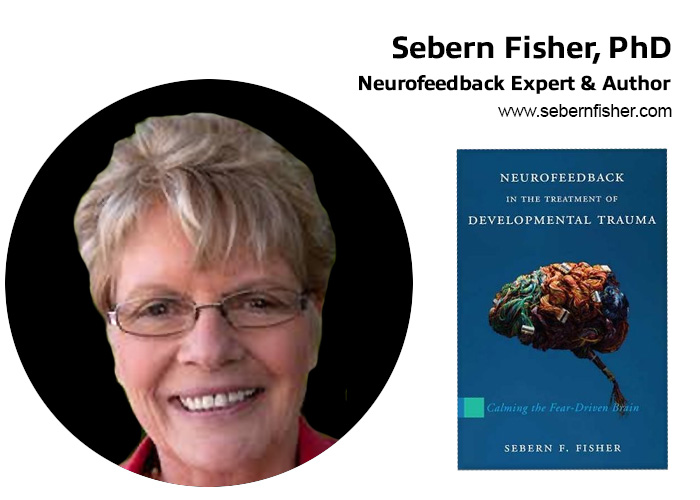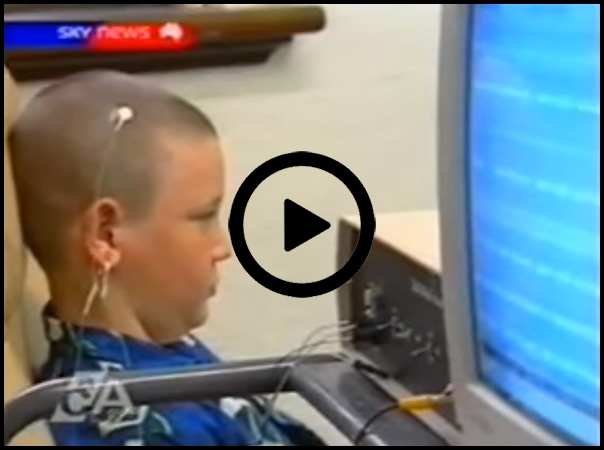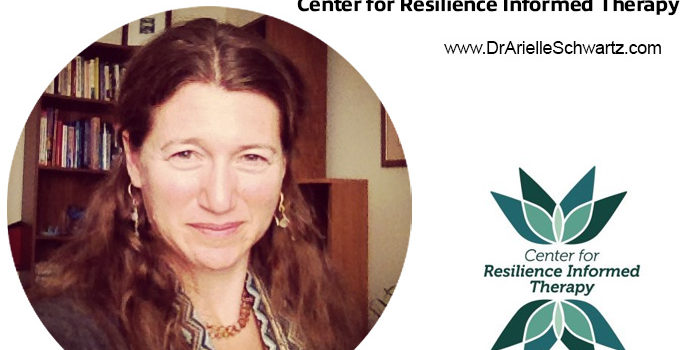Before developmental trauma becomes a behavioral, learning or relational problem it is a problem in the brain. We will be exploring how neglect and abuse in early childhood impact the developing brain and what therapies we can use to better address these impacts. My focus will be on neurofeedback which helps in extraordinary ways but neurofeedback is not a stand alone approach. Developmental trauma victims need to discover and often recover their brains and the minds they give rise to within a relationship with an attuned and caring therapist. In many cases neurofeedback is required before therapy can be helpful and we’ll understand why as we explore the impaired brain networks that these children and adults are left with.
| Excerpts from a report by Association for Child and Adolescent Mental Health:Research on people with histories of caregiver abuse and neglect consistently demonstrates problems with concentration, anger, panic, depression, food intake, drugs, and sleep, as well as decreased Heart Rate Variability, higher levels of stress hormones, and reduced or impaired immune response. The relationship between documented brain changes and psychopathology is complex. …The current practice of applying multiple distinct comorbid diagnoses to traumatized children prevents a comprehensive treatment approach. Approaching their problems from a framework of memories of discreet traumatic events ignores the fact that the damage affects the brain’s neural circuitry and goes well beyond dealing with discrete painful events. Our great challenge is to learn to utilize the brain’s neuroplasticity to reorganize defective brain circuits.[bold added][i] |
Developmental trauma is not recognized as a diagnosis in the DSM 5 but it is well known to those who have experienced it and those who treat it. Developmental trauma is not Post-traumatic Stress Disorder. As suggested by the release from the Association for Child and Adolescent Mental Health it is a brain disorder, particularly a disorder of neural circuitry. The brain is misfiring.
Ruth Lanius, MD, PHD, one of the leading researchers in developmental trauma, has said that research is suggesting that early childhood neglect and abuse impact every major system in the human brain from the brain stem to the cortex, from the sense of balance to the sense of self. Although memory is highly impacted in developmental trauma, it is not a memory disorder. It is a developmental brain injury.
In 2010, Thomas Insel then the Director of the Institute for Mental Health (NIMH) said, “Neuroscience is revealing the malfunctioning circuits underlying psychological disorders and forcing psychiatrists to rethink the causes of mental illness.” [ii] Faulty circuits underlie all disorders but none, as we will discover, more so than in the brains of those suffering with developmental trauma. And unfortunately, even with convincing neuroscience that clearly reveals that misfiring brain circuitry is the problem, not enough psychiatrists or therapists have rethought the causes of mental illness, much less the possibility that these causes suggest an entirely different approach to addressing them. Let’s explore this.
The brain organizes itself in its patterns of firing (circuits) in the domain of frequencies (HZ). not as we have learned to think, in the chemical domain. Don’t glaze over! I know not many of us we’re drawn to study electricity and many of us won’t know what a Hertz is (cycles per second) but hang in here with this. As you’ll see over time circuitry, frequency and connectivity have everything to do with developmental trauma.
Of course, neurotransmitters (the bio-chemicals) are vital to brain function- our brains can’t function without them -but they are probably most important because, to put it much too simply, they either excite of inhibit firing of neural circuits. It is important to understand this principle because it explains both the limitations of therapies we are presently providing for people with these histories and helps point the way toward the approach I will be writing about now and overtime in this blog, neurofeedback or brain wave training.
A picture may be worth a thousand words and a video may be worth millions. To spare you too many words, take a look at this link showing a video of a very disturbed boy in Australia before and after neurofeedback training. At the time his mother took Ken for neurofeedback he was on the brink of being sent to a juvenile detention center because of his uncontrollable aggression mostly against her. There had been many calls to the police. The original film that he is looking at is of him several years earlier taken for a Sky News piece on untreatable children. You will see that the sensors are placed on the right side of this boy’s head, to pick up brain waves from the right hemisphere. This is the hemisphere most responsible for affect regulation which Ken was manifestly not good at. Ken is playing this video game with his brain, not his hands. Simply put, when he makes frequencies that are calming to his nervous system, he makes the center rocket ship move out into space and makes points. He also has to keep the rocket ships on the right and the left in the dock. They represent intrusive slow wave (the purple) very common in those with trauma histories and body tension or bracing (excess fast wave). When his brain is rewarded for accomplishing this, it learns quickly to make more of these calming frequencies until, over time, the boy himself calms down. Watch and see what happens: YouTube Neurofeedback and ADHD: A mom with a VERY out of control boy
I assume that this boy was actually dealing with early life trauma of some sort but I don’t know for sure. It doesn’t look like anything I would think of as ADHD. Whatever the diagnosis, this child needed to quiet his nervous system and he did. It could take longer for a brain profoundly impacted in childhood to fully accomplish its own regulation but it is typical not unusual for such brains to learn how to regulate themselves. As a colleague of mine once said, “Brains are devoted to their own regulation. They have to be.”
But children’s brains don’t learn to regulate themselves on their own. Their parents teach them regulation when they are regulated themselves and attuned to the needs of their baby. This is essentially the process that underlies human attachment. Allan Schore describes it as the download of the mother’s pre-frontal cortex into the pre-frontal cortex of the baby. The baby’s brain regulates itself through the mother’s regulation, hearing her heart beat, the prosody of her voice, feeling the safety in the cradling of her arms.
But when the parents are absent or abusive in any of the innumerable ways this happens in the human experience, the baby’s brain will not organize. It will misfire and it will practice that misfiring for the rest of the child’s life. This misfiring can manifest as aggression, as was the case for Ken but also as a wide range of symptoms from depression, fearfulness, and rages to panic attacks, sleep problems, migraines, constipation and learning problems. Those who have survived developmental trauma are typically suffering many if not all of these seemingly discreet symptoms. An over aroused misfiring nervous system underlies all of them.
The Adverse Childhood Experience study or ACEs details the terrible toll this takes over a life time. [iii] Intensive reparenting in some form has a chance at rewiring these faulty circuits when done early enough in the child’s life but other than this, neurofeedback is the only approach I have seen that can.
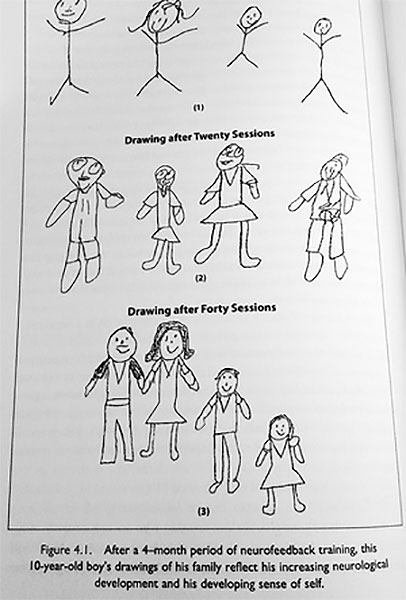 |
For now I will leave you with these drawings (P 120 of my book)[iv] that show a child’s self-representation over the course of four months and forty sessions of neurofeedback. What we are seeing is the rapidly organizing nervous system of this boy and the changes in family dynamics as a result. He is the older of the two siblings and he is at the far right of the first and second drawing. In the last he has taken his proper place in the family. No one has hands yet but you get the sense that they will soon. When Bessel van der Kolk, a leading expert in trauma and its consequences, saw these drawings he said, I don’t know of any other therapy that could show such changes. |
Written by Sebern Fisher, author of Neurofeedback in the Treatment of Developmental Trauma: Quieting the fear-driven brain. Norton 2014 – www.sebernfisher.com Sebern is available to answer questions except for referrals – to find a practitioner use www.eeger.com and www.isnr.net
…
Sebern Fisher has integrated Neurofeedback and psychotherapy in her treatment of developmental trauma in adults and adolescents for the past 17+ years. Prior to adopting Neurofeedback, Sebern was the clinical director of a residential treatment program for severely disturbed adolescents for 15 years. While there she introduced the understanding of the impact of attachment rupture and was the first to implement DBT in a residential setting. She authored “Neurofeedback in the Treatment of Developmental Trauma: Calming the Fear-Driven Brain.” Sebern consults and trains on the integration of Neurofeedback and therapy, nationally and internationally.
Visit Sebern Fisher’s expert page with articles, videos, and more.

Sources:
[i] © 2016 Association for Child and Adolescent Mental Health
[ii] Faulty Circuits, Scientific American 2010. https://www.scientificamerican.com/article/faulty-circuits/
[iii] CDC-Kaiser, Ace Study https://www.cdc.gov/violenceprevention/childabuseandneglect/acestudy/index.html
[iv] Sebern Fisher, Neurofeedback in the Treatment of Developmental Trauma: Calming the Fear-Driven Brain. (W. W. Norton & Company; 2014): 120



